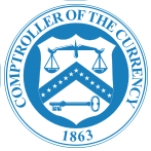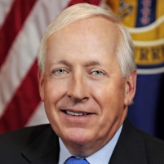In 2008, the country was rocked by one of the largest housing crises in US history, which threatened to bring down numerous banks. By the summer, the OCC had stepped in and closed several national banks, including First National Bank of Nevada and First Heritage Bank of Newport Beach, CA. Some banking experts predicted that approximately 100 banks would fail by the time the crisis was over. Others, however, described such an estimate as wishful thinking, arguing the final number would be much higher.
By law, the OCC is prohibited from releasing information from its bank safety and soundness examinations to the public. National banks must, however, submit a Report of Condition and Income (call report) four times a year to the Federal Deposit Insurance Corporation. Call reports contain publicly available financial information about the bank. The FDIC makes these reports available upon request by phone (202-898-6570) and on the web.
.
According to USAspending.gov, the Office of the Comptroller of the Currency spent approximately $604 million on private contractors from 2000-2008. A total of 1,679 contractors were paid by the OCC for services that included ADP and telecommunications services ($179.8 million), ADP systems analysis ($40.8 million), telecommunications network management services ($34.7 million) and architect-engineer services ($22.3 million).
|
Primescape Solutions Inc.
|
$85,334,844
|
|
Paradigm Holdings, Inc.
|
$66,243,303
|
|
Stanley, Inc.
|
$37,035,991
|
|
Pragmatics, Inc.
|
$32,545,773
|
|
Cigna Corporation
|
$29,182,273
|
|
Domus Holdings Corp
|
$21,975,605
|
|
Group Goetz Architects, PC
|
$21,417,600
|
|
SI International, Inc.
|
$15,327,847
|
|
Dell Inc.
|
$13,718,945
|
|
RCM Technologies, Inc.
|
$13,493,079
|
Exposing Terror Financing: Who is Treasury Protecting Under Its Veil of Secrecy? (by Andrew Cochran, Counterterrorism Blog)
- Table of Contents
- Overview
- History
- What it Does
- Where Does the Money Go
- Controversies
- Suggested Reforms
- Comments
- Leave a comment


Thomas J. Curry took office on January 12, 2004, as a member of the board of directors of the Federal Deposit Insurance Corporation for a six-year term. On July 1, 2011, President Barck Obama nominated Curry to be comptroller of the currency. He was finally confirmed by the Senate almost nine months later, on March 29, 2012.
Curry is a graduate of Manhattan College (summa cum laude) as an elected member to Phi Beta Kappa and earned his law degree from the New England School of Law.

John Walsh was appointed Acting Comptroller of the Currency on August 15, 2010. In this position he serves as director of the Federal Deposit Insurance Corporation (FDIC) and chief executive of the Office of Comptroller of the Currency (OCC), overseeing about two-thirds of commercial banking assets in the United States.
Walsh graduated from the University of Notre Dame in 1973. Trained to be an aerospace mechanical engineer, and graduating magna cum laude, he was offered a job with Bell Labs. Instead, he joined the Peace Corps, teaching high school in Ghana for two years. He returned to school and earned his master’s degree in Public Policy from the Kennedy School of Government at Harvard University in 1978. Walsh worked with the Mutual Broadcasting System, and then spent six years at the Office of Management and Budget as an International Program Analyst.
- Latest News
- D.C. Public Schools will Teach all Second-Graders to Ride a Bike
- New Rule in Germany Limits Sales of Sex-Themed E-Books to 10pm to 6am
- What Happened to the 6-Year-Old Tibetan Boy the Chinese Government Kidnapped 20 Years Ago?
- U.S. Ambassador to Turkey Photoshops his Hair Color to Mock Turkish Mayor
- Mystery Artist Calls Attention to Unfixed Potholes by Drawing Penises around Them
In 2008, the country was rocked by one of the largest housing crises in US history, which threatened to bring down numerous banks. By the summer, the OCC had stepped in and closed several national banks, including First National Bank of Nevada and First Heritage Bank of Newport Beach, CA. Some banking experts predicted that approximately 100 banks would fail by the time the crisis was over. Others, however, described such an estimate as wishful thinking, arguing the final number would be much higher.
By law, the OCC is prohibited from releasing information from its bank safety and soundness examinations to the public. National banks must, however, submit a Report of Condition and Income (call report) four times a year to the Federal Deposit Insurance Corporation. Call reports contain publicly available financial information about the bank. The FDIC makes these reports available upon request by phone (202-898-6570) and on the web.
.
According to USAspending.gov, the Office of the Comptroller of the Currency spent approximately $604 million on private contractors from 2000-2008. A total of 1,679 contractors were paid by the OCC for services that included ADP and telecommunications services ($179.8 million), ADP systems analysis ($40.8 million), telecommunications network management services ($34.7 million) and architect-engineer services ($22.3 million).
|
Primescape Solutions Inc.
|
$85,334,844
|
|
Paradigm Holdings, Inc.
|
$66,243,303
|
|
Stanley, Inc.
|
$37,035,991
|
|
Pragmatics, Inc.
|
$32,545,773
|
|
Cigna Corporation
|
$29,182,273
|
|
Domus Holdings Corp
|
$21,975,605
|
|
Group Goetz Architects, PC
|
$21,417,600
|
|
SI International, Inc.
|
$15,327,847
|
|
Dell Inc.
|
$13,718,945
|
|
RCM Technologies, Inc.
|
$13,493,079
|
Exposing Terror Financing: Who is Treasury Protecting Under Its Veil of Secrecy? (by Andrew Cochran, Counterterrorism Blog)
Comments


Thomas J. Curry took office on January 12, 2004, as a member of the board of directors of the Federal Deposit Insurance Corporation for a six-year term. On July 1, 2011, President Barck Obama nominated Curry to be comptroller of the currency. He was finally confirmed by the Senate almost nine months later, on March 29, 2012.
Curry is a graduate of Manhattan College (summa cum laude) as an elected member to Phi Beta Kappa and earned his law degree from the New England School of Law.

John Walsh was appointed Acting Comptroller of the Currency on August 15, 2010. In this position he serves as director of the Federal Deposit Insurance Corporation (FDIC) and chief executive of the Office of Comptroller of the Currency (OCC), overseeing about two-thirds of commercial banking assets in the United States.
Walsh graduated from the University of Notre Dame in 1973. Trained to be an aerospace mechanical engineer, and graduating magna cum laude, he was offered a job with Bell Labs. Instead, he joined the Peace Corps, teaching high school in Ghana for two years. He returned to school and earned his master’s degree in Public Policy from the Kennedy School of Government at Harvard University in 1978. Walsh worked with the Mutual Broadcasting System, and then spent six years at the Office of Management and Budget as an International Program Analyst.
- Latest News
- D.C. Public Schools will Teach all Second-Graders to Ride a Bike
- New Rule in Germany Limits Sales of Sex-Themed E-Books to 10pm to 6am
- What Happened to the 6-Year-Old Tibetan Boy the Chinese Government Kidnapped 20 Years Ago?
- U.S. Ambassador to Turkey Photoshops his Hair Color to Mock Turkish Mayor
- Mystery Artist Calls Attention to Unfixed Potholes by Drawing Penises around Them





Comments